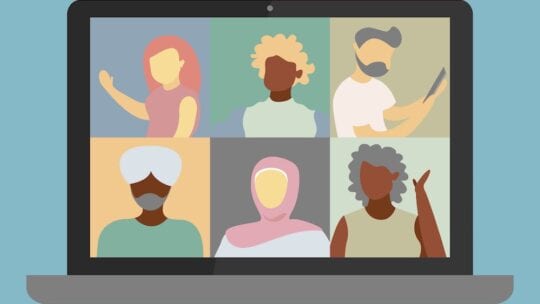
When communicating a commitment to equality to employees, actions speak louder than words. Many companies have launched employee resource groups (ERGs). Ideally these employee-led groups have clear missions, goals and objectives. Their aim is improving the company.
ERGs can incorporate a variety of commonalities, including race, gender, sexual orientation, disability and religion, Indeed.com says. They typically fall under one of four categories: diversity resource groups, volunteer groups, affinity groups and professional development groups.
In addition, Indeed.com says the first ERGs, also known as Workplace Affinity Groups, formed in the 1960s “in response to racial tension and workplace discrimination.” A former CEO of Xerox, Joseph Wilson, developed the idea after witnessing race riots. This resulted in the formation of the National Black Employees Caucus.
Cultivating a safe environment for employees to launch ERGs not only creates a better work experience, but demonstrates the company's commitment to employees.
Done well, ERGs can help “foster [employees'] sense of belonging and connection to their respective companies,” says Ingrid Hadley, a consultant, who oversaw ERGs globally for NBCUniversal.
“It's imperative to establish the groups based on affinity, to provide support for career development, and create a safe space where employees can be their authentic selves,” Hadley adds.
Starting an ERG
Before launching an ERG, it's important to set an intention and purpose. This helps avoid employees seeing the ERG as an empty gesture, says Wendy Roundtree, founder of Jarel Communications.
Like diversity, “ERGs should be an extension of your company culture, not an item you check off a list,” Roundtree says. “It’s vital that organizations start with why. It’s not enough to simply say 'we exist.' Share the purpose, goals, initiatives, and, more importantly, how the group aligns with the values of the organization.”
Shutterstock, which has four ERGs, promotes the mindset that ERGs are created for employees, by employees. Heidi Garfield, interim chief HR officer at Shutterstock, shared its ERG principles:
- People and Purpose: “First, you need to gather some people to form a Launch Committee. Together, write a short mission statement and set up the ground rules for how you want to run the ERG. Start thinking about what the focus will be, as well as how the ERG can improve and impact the company’s culture and values.”
- Logistics: “Come up with a name that is representative of your ERG; get creative! Then find an executive sponsor, a leader from the company who will advocate for you to senior leadership and be the face of the ERG to employees. Afterward, select areas of focus for the ERG and start to form sub-committees, if appropriate, that focus on initiatives the ERG might organize, such as speakers, programming, volunteerism and events.”
- Design and IT: “Get together with the Creative Team to design a logo within brand guidelines. Now your ERG needs to find a way to communicate. Create an email alias, group calendar and Slack channel to start chatting with the community and promoting events.”
- Registration and Launch Planning: “Register your ERG with the HR Team. Once you’re done, plan a kickoff event to bring awareness to your group internally and an external event to positively impact the community.”
Garfield says Shutterstock’s ERGs foster and promote "a culture of inclusion for LGBTQ+, Black, Latinx/Hispanic and female employees.” In addition, ERGs contribute to the larger goal of representation within the organization.
“They’re committed to empowering employees in their educational and career development at Shutterstock and within the larger community,” Garfield notes.
Promoting ERGs
Those we interviewed agreed it's important that senior leaders communicate strong support of ERGs.
“When senior leaders communicate their support and the importance of ERGs to the company, it sends a strong message to employees and validates their efforts and presence,” Hadley says.
Garfield agreed “it’s important that an ERG has an executive sponsor to advocate for it at the senior leadership level and to attract the attention the ERG deserves among employees throughout the organization.”
Hadley says finding an appropriate platform to clearly communicate events and allow employees to engage is crucial for ERG success.
“Marketing events via a platform that allows employees to engage and communicate works well and builds community,” Hadley says. “Email newsletters, internal chats, Slack, posters, or digital screens are also effective tools.”
ERG Success
Hadley says ERGs that are most impactful embrace programming and events that cover four categories simultaneously: Career, Community, Culture and Commerce.
“The ability to connect in safe spaces with those of like affinity is powerful,” Hadley says. “The conversations that bubble up when these groups connect and discuss common goals and challenges allow the company to glean key insights that promote progress and change.”
Garfield says Shutterstock's groups created a resource hub of external-facing content collections. The hub supports media, business and brands to accurately represent the Black community in campaigns and articles.
In addition
- it is reviewing job postings for inclusive language
- forming a DEI council and
- partnering with legal and HR to update company policies with more inclusive language.
Adds Hadley, while ERGs "are a resource for" DEI, "they should not exist as the company's only viable effort. They are companions to a much broader plan.”
Nicole Schuman is a reporter for PRNEWS. Follow her @buffalogal
